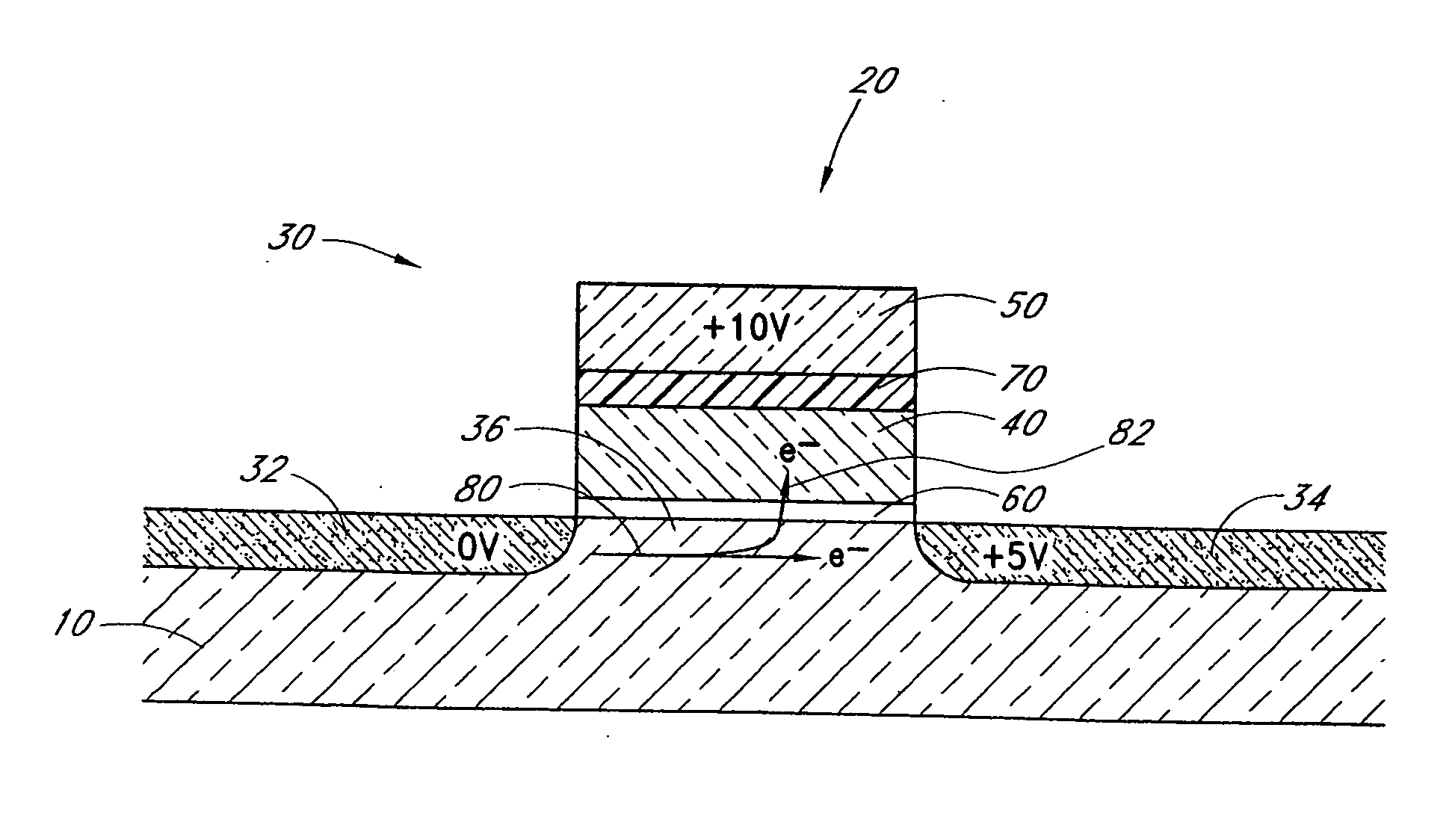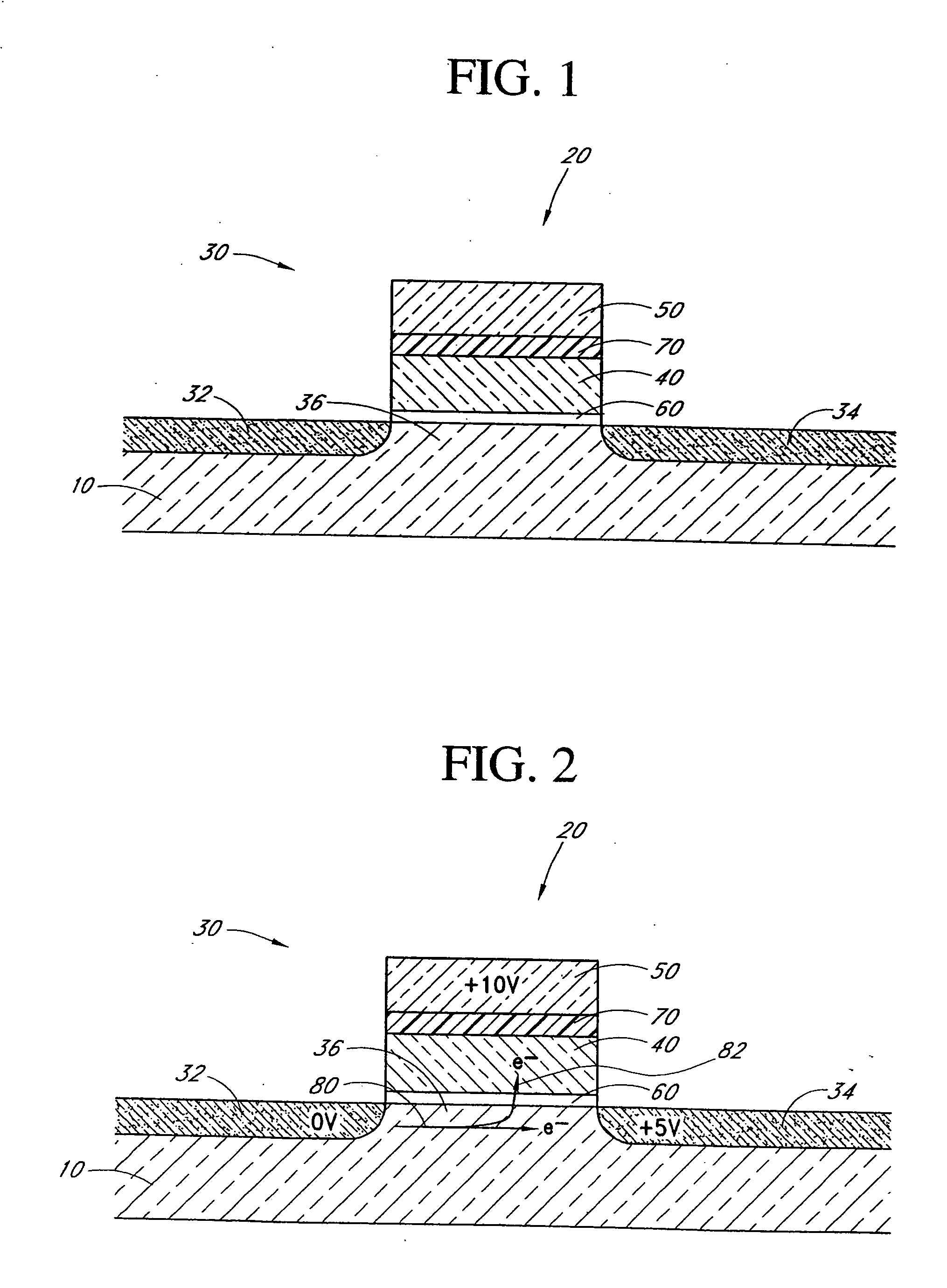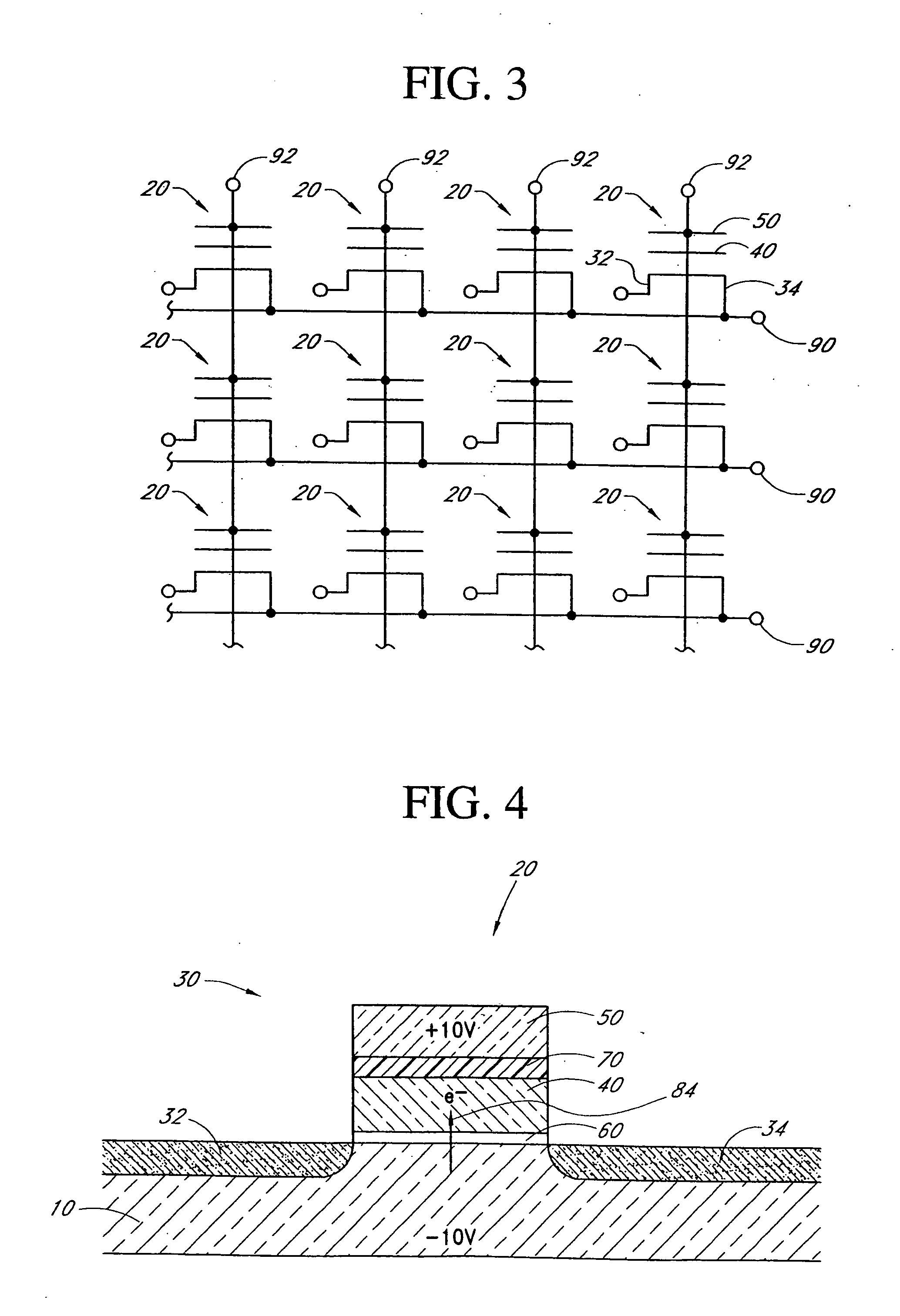Programming methods for multi-level flash EEPROMs
a multi-level, flash memory technology, applied in static storage, digital storage, instruments, etc., can solve the problems of wasting valuable space in the circuitry needed to confirm that a particular cell has been properly programmed, prolonging the programming process, and requiring a substantial amount of time for verification steps, etc., to achieve fast multi-level programming of flash memory devices
- Summary
- Abstract
- Description
- Claims
- Application Information
AI Technical Summary
Benefits of technology
Problems solved by technology
Method used
Image
Examples
Embodiment Construction
[0032]FIG. 1 schematically illustrates a semiconductor substrate 10 with a memory cell 20 compatible with the present invention. The memory cell 20 includes a transistor 30, a floating gate 40, and a control gate 50 above the floating gate 40 in a stacked gate structure. The transistor 30 comprises a source region 32, a drain region 34, and a channel 36 between the source region 32 and the drain region 34. The floating gate 40, typically composed of polycrystalline silicon (i.e., “polysilicon”), is electrically isolated from the underlying semiconductor substrate 10 by a tunnel dielectric layer 60, which is a thin dielectric layer, typically formed of an insulating oxide, and more particularly, silicon oxide, and is typically approximately 100 Å thick. The control gate 50 is positioned above the floating gate 40, and is electrically isolated from the floating gate 40 by a storage dielectric layer 70, such as oxide-nitride-oxide (ONO). Electrical access to the floating gate 40 is the...
PUM
 Login to View More
Login to View More Abstract
Description
Claims
Application Information
 Login to View More
Login to View More - R&D
- Intellectual Property
- Life Sciences
- Materials
- Tech Scout
- Unparalleled Data Quality
- Higher Quality Content
- 60% Fewer Hallucinations
Browse by: Latest US Patents, China's latest patents, Technical Efficacy Thesaurus, Application Domain, Technology Topic, Popular Technical Reports.
© 2025 PatSnap. All rights reserved.Legal|Privacy policy|Modern Slavery Act Transparency Statement|Sitemap|About US| Contact US: help@patsnap.com



